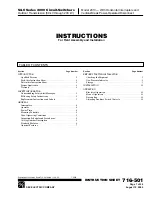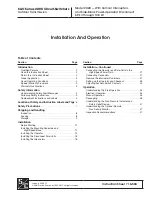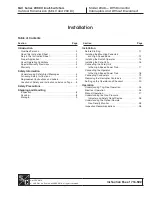
4. Device Concept
UMX-HDMI-140 series– User's Manual
28
Applied firmware package: v1.3.0b5 | LDC software: v2.5.6b2
4.6.3.
RS-232 Recognizer
DIFFERENCE:
This feature is available only in UMX-HDMI-140-Plus model from FW package v1.2.0b12.
RS-232 Recognizer Example
Steps and Settings
Process
Settings
When signal presents on any HDMI input, the
extender sends a message: '
ping
'.
This condition and the action is set in Event manager.
The serial communication is scanned continuously by the
recognizer in the extender and gets the '
Login name
' string.
Video codec sends a message: '
Login name:
'.
When '
Login name:
' is detected in the string, the
extender sends a message: '
Admin
'.
This condition and the action is set in Event manager.
The serial communication is scanned continuously by
the recognizer in the extender and gets the '
Password
'
string.
Video codec sends a message: '
Password:
'.
When '
Password:
' is detected in the string, the
extender sends a message: '
Admin
'.
This condition and the action is set in Event manager.
Login is established, Video codec is ready to use.
First, configure the recognizer for the serial communication, after that, set the events in the Event Manager (for
more details see the
section). The RS-232 recognizer settings has to be done with Lightware
Device Controller Software (see the
section) or with LW3 protocol commands (see the
section).
Settings in the Event manager
▪
E1.
When the signal is present on O1 port of the
UMX switcher, it sends a message
'PING'
on P1 port of
RS-232 to the VC codec. For more details see Message Sending via RS-232 Serial Port section.
▪
E2
. Set a condition where '
Login name:
' is the recognized RS-232 message. Action is sending serial
message ('Admin') on the P1 port to the VC codec.
▪
E3
. Set a condition where '
Password:
' is the recognized RS-232 message. Action is sending serial
message ('Admin') on the P1 port to the VC codec.
4.7.
Ethernet Interface
The device can be controlled over the Ethernet port. This interface supports both LW2 and LW3 protocols.
4.7.1.
Device Control over Ethernet
The interface can be also used to remote control a third-party device and establish the connection to
Lightware Device Updater software and perform firmware update.
Third-party Device Control via Local Ethernet (Example)
The following ways are available for device control:
▪
The
system controller
can communicate with the
switcher
via Ethernet using LW2/LW3 protocol
commands.
▪
The
system controller
can communicate with the
projector
by its IP:port address.
▪
The
switcher
can send commands (e.g. as an action by the Event Manager) to the IP:port address
of the
projector
by using LW3 protocol commands. See Event Manager usage in the
section, and find the related LW3 protocol commands in the
4.7.2.
Wake-on-Lan
DIFFERENCE:
This feature is available from
FW package v1.3.0b5
.
The well-known wake-on-lan feature (sending magic Packet to the target PC) is available. This can be used
to power on a computer automatically: just send a simple LW3 command, see the
section.
INFO:
Please make sure the feature is enabled in the target PC and it is powered (but switched off).
















































